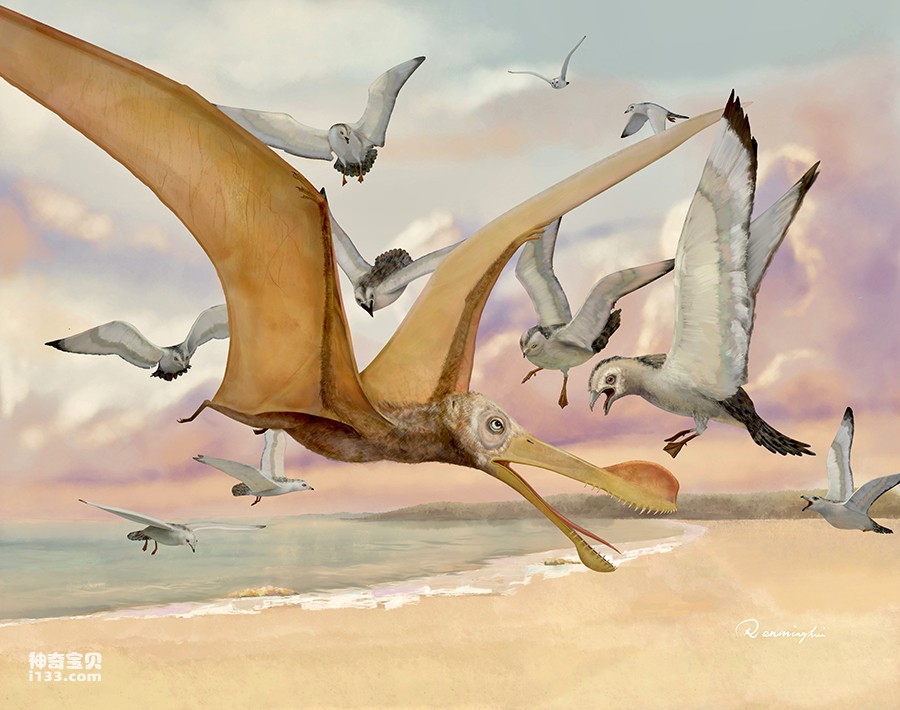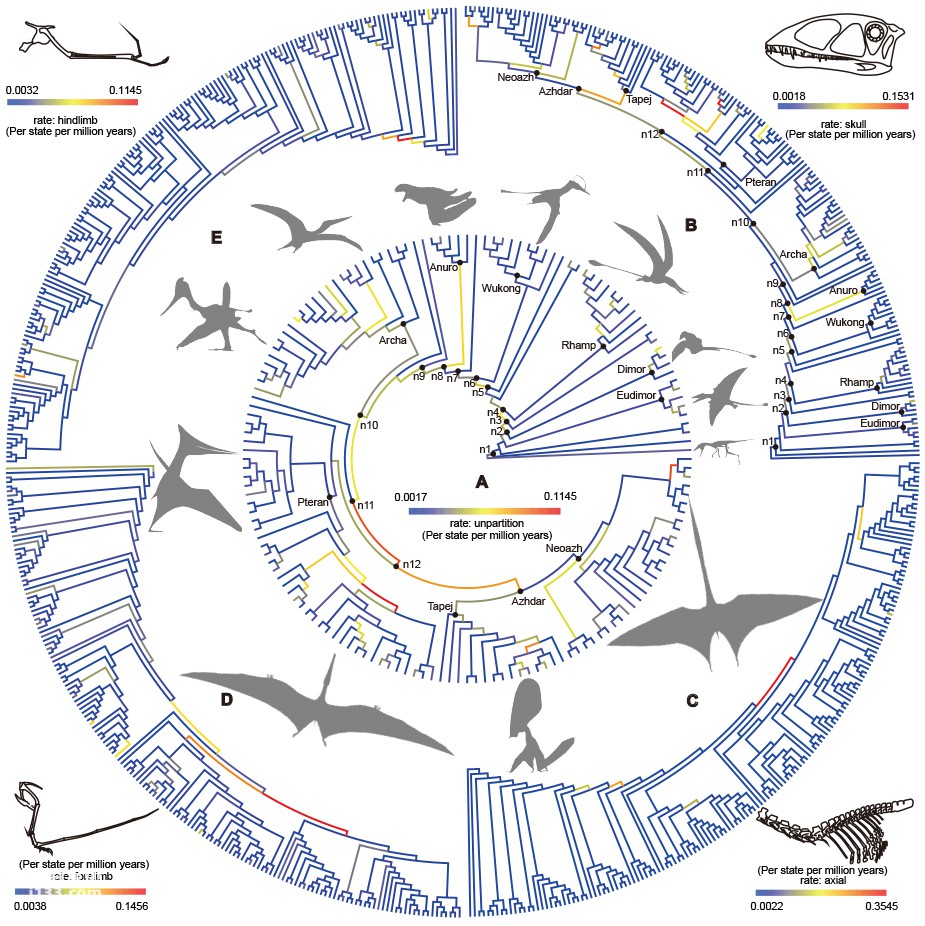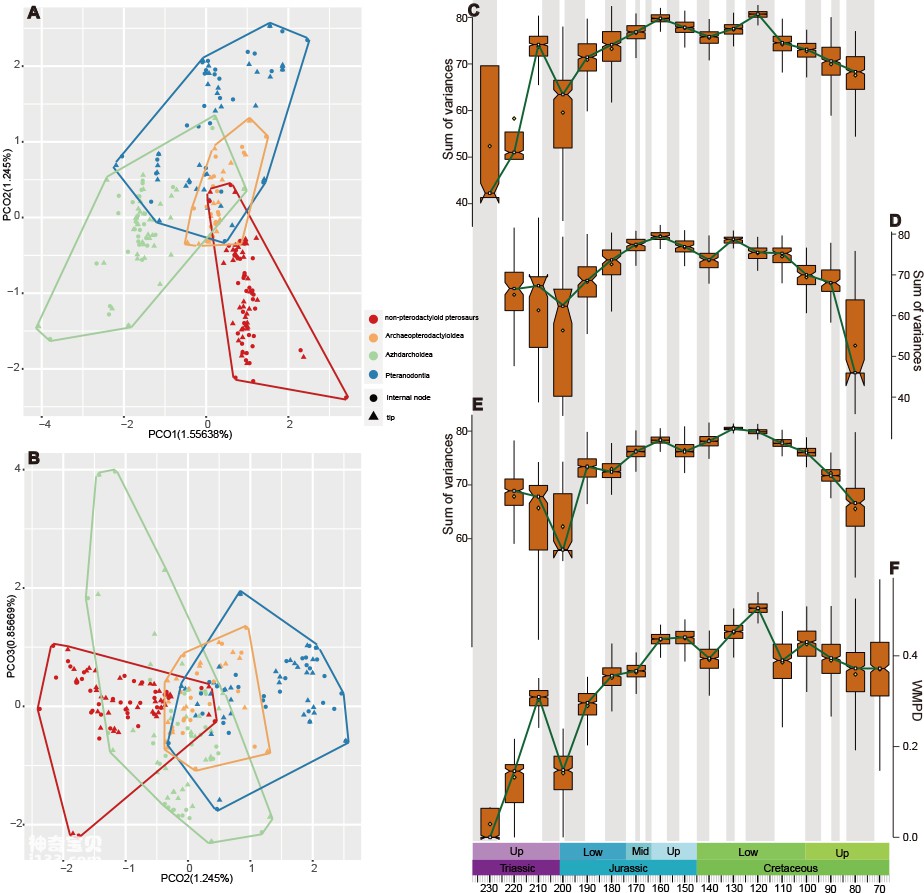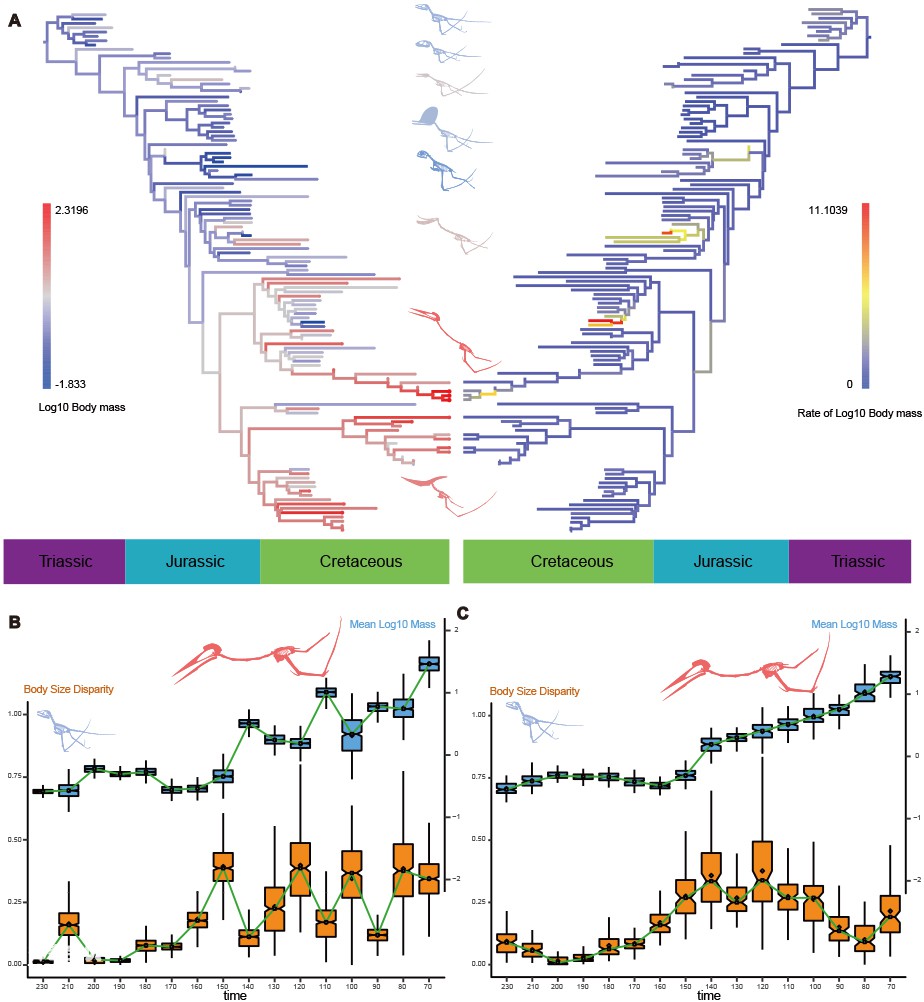As the earliest vertebrate with active flight capabilities, the macroevolution of pterosaurs has received widespread attention in the academic community. The evolutionary history of pterosaurs can be roughly divided into two stages, namely a 115 million year period of prosperity and a 65 million year period of decline. The boom period is accompanied by multiple peaks of net seeding rates, as well as high morphological diversity and morphological evolution rates; the decline stage is accompanied by negative net seeding rates, continuously decreasing morphological diversity, and low morphological evolution rates. . The macroevolution of pterosaurs has also been affected by many factors, such as body size, decorative structures on the head, and the exclusion of competition from smaller pterosaurs by birds. The study also found that the diversity of many large terrestrial amniotes, including pterosaurs, showed a downward trend in the mid-Cretaceous. This diversity decline may have been caused by multiple factors, including a decrease in land area. of.

Figure 1. Liaoning pterosaur flying into the flock of birds
The researchers collected and integrated new pterosaur morphological matrices, appendage bone measurements and constructed the largest pterosaur supertree to date. The study used a unified Bayesian terminal dating model to simultaneously estimate changes in morphological evolution rates and diversity dynamics over time; used a time slice model to estimate changes in morphological differentiation over time; and used a Bayesian phylogenetic regression model to estimate 120 species Body weight of pterosaurs, and analysis of body size evolution rates and ancestral state restoration. The study also explored the correlation between morphological evolution rate and missing data, as well as the correlation between net species formation rate and the number of exposed strata, to eliminate the effects of missing data and sampling bias.

Figure 2. Changes in net species formation rate, species formation rate, extinction rate, and morphological evolution rate of pterosaurs over time
Research results show that the prosperity period of pterosaurs basically corresponds to small body size, while the decline period corresponds to large body size. The boom period is accompanied by multiple waves of peaks in net seeding rate and high morphological diversity and morphological evolution rate, and every increase in net seeding rate is almost always caused by an increase in seeding rate and a decrease in extinction rate. The decline period is accompanied by a negative net species formation rate, continuously decreasing morphological diversity and a lower morphological evolution rate. This result showed sufficient robustness in different sensitivity analyses, and correlation analysis showed that the results were not affected by missing data and stratigraphic sampling bias.

Figure 3. Changes in the morphological evolution rate of pterosaurs on trees
There was a significant decline in the net speciation rate of pterosaurs at the boundary between the Late Jurassic and the Early Cretaceous, and this decline was caused by a substantial increase in the extinction rate. At the same time, the net species formation rate and morphological diversity of early birds showed an upward trend during this period. This result supports the hypothesis of competitive exclusion of small pterosaurs by early birds. Although the large pterosaurs of the Early Cretaceous avoided competition with birds of the same period, the morphological diversity and body size diversity of birds continued to increase during the Cretaceous, and the pterosaurs of the Late Cretaceous may still have to face competition from birds. competitive pressure exerted.

Figure 4. The evolution of morphological diversity in pterosaurs
The research results also show that the diversity of large terrestrial amniotes, including pterosaurs, such as non-avian dinosaurs, rhinoceros, crocodylomorphs, etc., showed a downward trend in the mid-Cretaceous. The amount of habitat suitable for animals decreases exponentially as the size of the animal increases, so the impact of habitat loss on large animals will be more significant. It is therefore likely that the reduction in habitat due to the decline in continental area during the mid-Cretaceous was the main cause of the decline in the diversity of large terrestrial amniotes.

Figure 5. Body shape evolution of pterosaurs
animal tags: pterosaur dinosaur
We created this article in conjunction with AI technology, then made sure it was fact-checked and edited by a Animals Top editor.